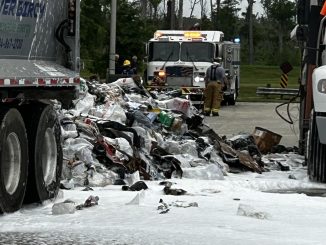
Calling for more than $60 million in transportation projects, the newly adopted St. Charles Parish Comprehensive Pedestrian & Bicycle Master Plan is aimed at improving safety, increasing transportation and spurring economic development.
“It’s been a long time coming for this plan,” said parish Planning Director Michael Albert.
Initiated in late 2014, Albert said the parish’s departments of grants and planning and zoning started working on developing the plan when statistics indicated a rise in crashes. The vision of the St. Charles Parish Comprehensive Pedestrian & Bicycle Master Plan is to make walking and biking feasible and safe for all residents, through targeted improvements to infrastructure, programming and enforcement.
While the plan doesn’t obligate the parish to funding these projects, Albert said it will serve as a guide as funding becomes available for them. It also serves as a guide in developments proposed in affected areas.
The plan divides the parish into three key areas with the proposed projects: East Bank, $26.7 million; West Bank, $13.1 million, and the Bayou area, $20.6 million.
Among the high priority projects are:
- Old Spanish Trail (Paul Maillard Road to Up The Bayou Road), 38,265-foot path and safety improvements, estimated $10.1 million.
- Paul Maillard Road (River Road to Highway 90), 14,648 feet of path for high usage with safety improvements and connectivity, $3.6 million.
- West Bank Levee Multi-Use trail (Elm Street to St. John the Baptist Parish), 37,272 feet built for high-volume use and connectivity, $3.2 million.
- Spillway Road (Lower Guide Levee Road to Spillway Levee Crown), 8,956 feet of path with high-volume use and connectivity, $1.9 million.
- Lower Guide Levee (Wetland Watcher Park to Airline Highway), 17,930 feet of path and connectivity, $1.49 million.
Albert said plan goals will be integrated into future road projects by the parish and the DOTD to increase and provide safe road access to bicyclists and pedestrians.
Because of the parish’s large portion of surface water and wetlands, which lack nearly any infrastructure, the plan focuses on areas where land is developed and habitable or where future development may occur.
The plan was developed under the guidance of a steering committee, stakeholders and the public.
Albert said the plan aligns with Louisiana Department of Transportation and Development (DOTD), the parish’s 2030 Comprehensive Plan, parish’s Parks and Recreation Master Plan and Paul Maillard Road Corridor Revitalization Plan. It also aligns with the DOTD’s “Destination Zero Deaths” policy vision that calls for reducing non-motorized fatalities by 50 percent by 2030.
Gavin Gillen, of All South Consulting Engineers that developed the plan, said it’s the first study of its type for a “rural parish,” and told the council its emphasis is on safety.
Earlier, Gillen stated improving bike and walking paths was aimed at connecting neighborhoods, but its emphasis is on improving safety. He said one in five traffic fatalities were pedestrians or bicyclists in the parish according to LSU’s Louisiana Data Reports for 2005–2015. These crashes resulted in four bicyclists deaths and 16 pedestrian deaths. Since 2005, the parish has had 80 vehicle-bicyclist crashes, also according to LSU data, he said.
 The New Orleans Regional Planning Commission (RPC) hired the Metairie engineering firm to make the plan. RPC also said the grant funding makes St. Charles Parish the first rural parish to receive this money for the project.
The New Orleans Regional Planning Commission (RPC) hired the Metairie engineering firm to make the plan. RPC also said the grant funding makes St. Charles Parish the first rural parish to receive this money for the project.
In 2017, the parish and RPC held three workshops to review the pedestrian and bicycle master network. The community was asked to review the network, suggest edits and leave comments. Additionally, residents were asked to select their top priority routes.
Master Plan
- The parish’s roadway system totals 4,500 square miles on both sides of the Mississippi River yet less than 2 percent of it includes sidewalks (43 miles) or bicycle routes (31 miles)
- Few of them have sidewalks.
- One in five fatal vehicular crashes in the parish result in the death of a pedestrian or bicyclist, according to latest available crash data in the plan.
- To see maps with the proposed projects, please visit this story at www.heraldguide.com.




I live in St. John and ride the bike path to the St. Charles Parish line…then I have to turn around 🙁 It would be great if the path could be extended from St. John to the Spillway!